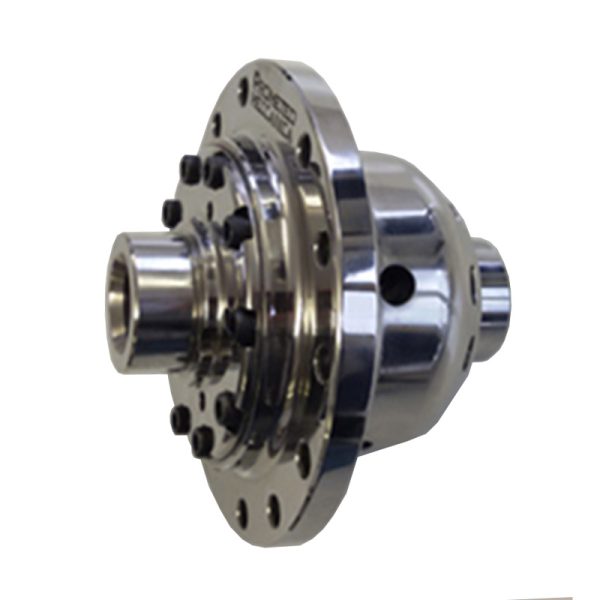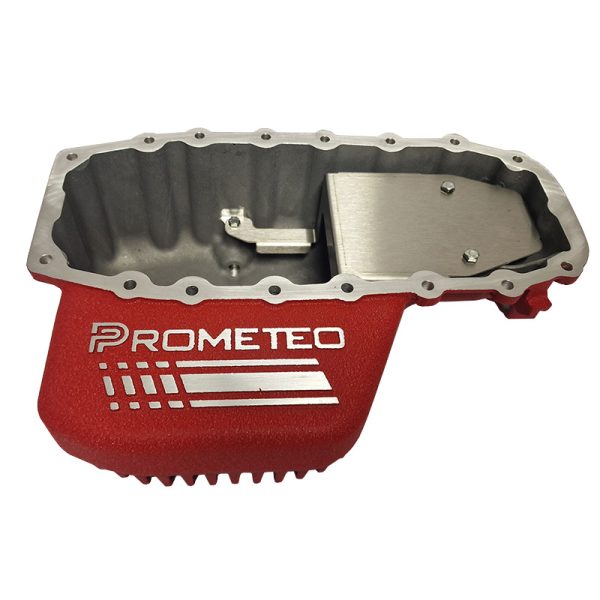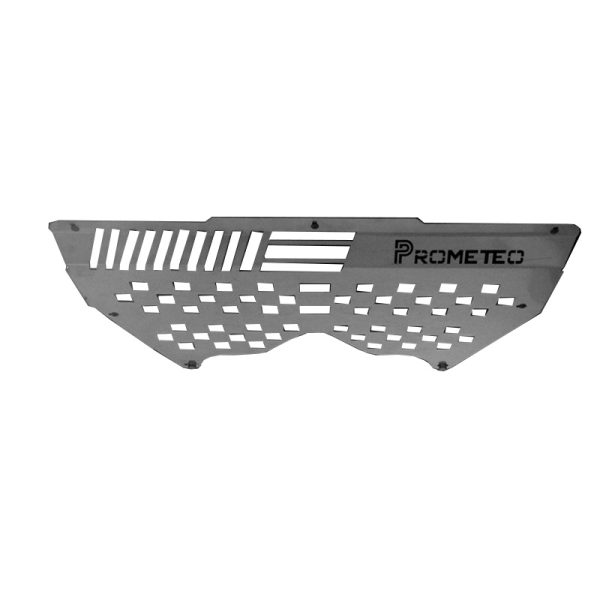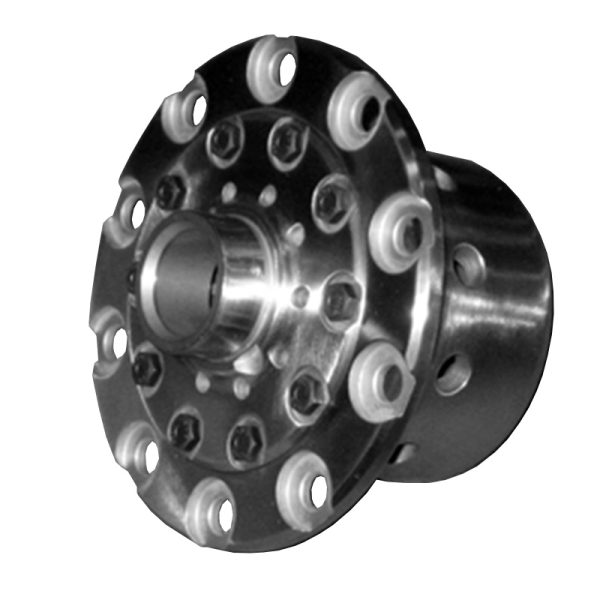SELF-LOCKING DIFFERENTIAL FOR M32 GEARBOX
Front-wheel-drive sports cars can suffer from poor traction because of the high torque load on the wheels.
This situation usually happens in corner exit, where internal wheel is partially unloaded by current weight because of centrifugal load drive; so, one wheel is able to unload to the ground an amount of torque far smaller than the other one. Note that an open (=standard) differential is characterised by the fact that it always divides the torque in two identical shares; so the maximum torque which can be unloaded to the ground is conditioned by the grip of the less loaded wheel.
A number of modern cars are already equipped as standard with an electronic system called TTC, which SIMULATES a self-locking differential: basically, when one of the two driving wheels loses grip , the electronic control unit in charge of traction control sends a braking impulse to the brake caliper of the slipping wheel: the negative torque that is added to the wheel allows the normal differential to be "fooled," sending equal torque to the wheel with more grip as well. TTC is a considerable and safe system, that permits a good control of the vehicle, but – we insist – it’s not a self-locking differential and it doesn’t guarantee the performances which only a well-made self-locking differential can give.
If you are used to using your car on the track during track days, or you do not like to have to suffer the unpleasant slippage of the inside wheel at every corner exit approached in a somewhat cheerful manner, then a true self-locking differential may be right for you.
Our helical-gear self-locking differential allows the drive torque coming from the engine to be divided asymmetrically, meaning that the wheel with the most grip will always receive a surplus of torque over the wheel with the least grip. The blocking percentage in shooting is about 35 percent. We preferred not to go further since the cars on which the differential can be mounted are street cars.
The helical gear differential has a very progressive operation and creates no undesirable effects in normal driving.
Locking rate in engine-brake mode is limited to 25%, so not to affect the braking and the cornering.
It’s very difficult to explain in words the effect achieved, but the sensation experienced when you open the throttle after the apex of a curve and don’t feel the front is going off on a tangent but is leading to the internal, is something unknown for a front drive standard differential.
In addition, the operation of our differential is compatible with the TTC.
How does a self-locking differential work? First of all, consider the open (=standard) differential in the front drive.
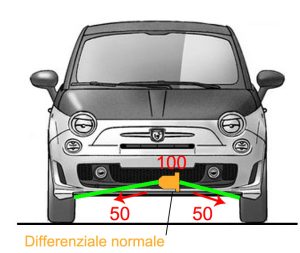
Differential is a device able to share the torque coming from the gearbox in two exactly identical halves, irrespective of wheel speed difference on the same axle. So, as you can see in the image, said 100 (arbitrary units) the torque coming to the differential, every wheel will receive a torque of 50.
There is another important factor to be taken into account: the grip of the tyres to the ground. In fact, torque can be "unloaded" to the ground up to the limit of wheel grip; this limit is then proportional to the fraction of the load acting on the wheel and the coefficient of grip, which depends mainly on the texture of the ground.
So, if one of the wheels of front drive goes over a zone of less grip (i.e. slippery asphalt), or it is low-loaded in driving a fast curve (internal wheel), the torque that this wheel can unload to the ground is reduced because it reaches its slipping limit. Due to the standard differential feature said before (mechanism sharing in equal parts the coming torque), the same (low) torque value will go to the other wheel, although it would have a good grip to the ground.

As you can see in the previous picture, said 20 the slipping limit of front left wheel, right wheel cannot do nothing better than unload 20 to the ground. So whole traction of front driveline reduces to 40, significantly less than 100 of previous example.
If we fit the Prometheus self-locking differential instead of the regular differential, traction in these cases improves. Let’s see how and how much.
First of all, in condition of good and uniform grip, self-locking differential behaves as an open differential, as shown in the following picture.
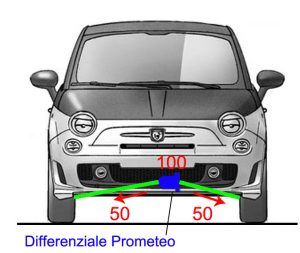
However, if one wheel loses grip, the self-locking differential transfers more torque to the other wheel. Therefore, the total torque discharged to the ground by the front axle is higher than that discharged to the ground by a common differential. The following figure is very explanatory of this mode of operation.

The rate of 35% is the best compromise found during plenty of tests made in different conditions. Don’t forget that an excessive locking rate would make the car too understeering in normal drive, with consequent troubles to the driver. On the other hand, a too small locking rate would have reduced self-locking differential advantages, making it substantially unuseful.
Please, contact us for further information.
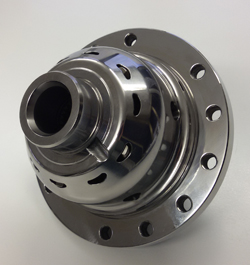
PROMETEO self-locking differential installs on the M32 transmission in place of the standard differential
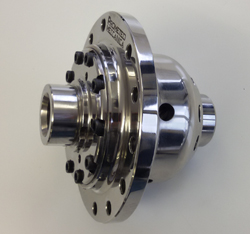
The Prometheus self-locking differential for M32 gearbox is available "off the shelf" for sale.


